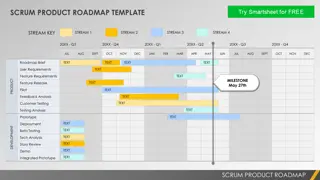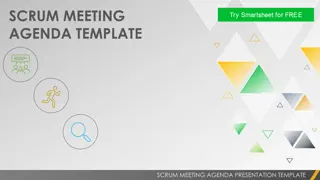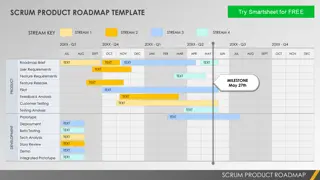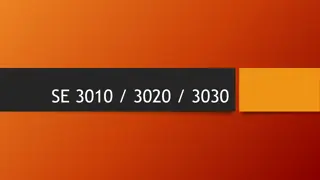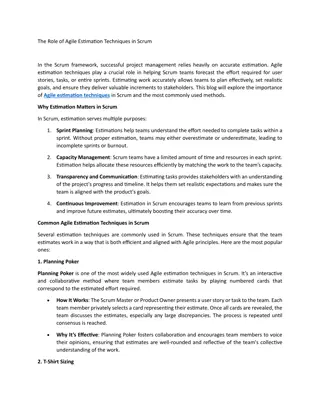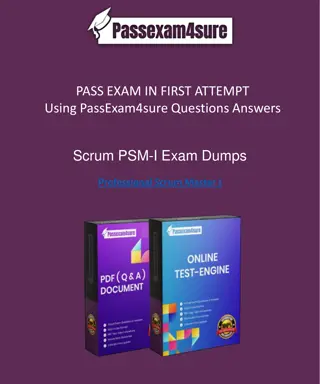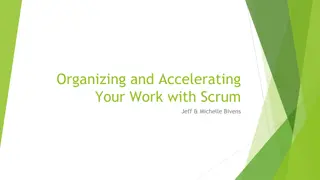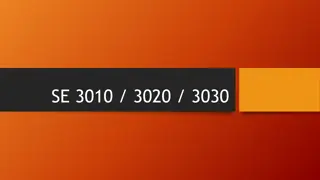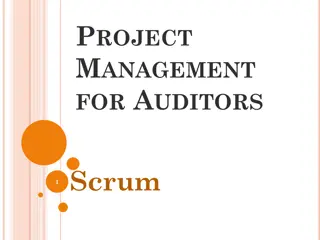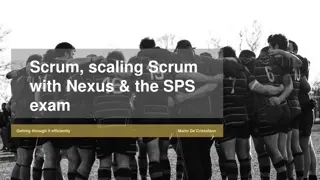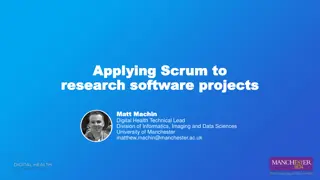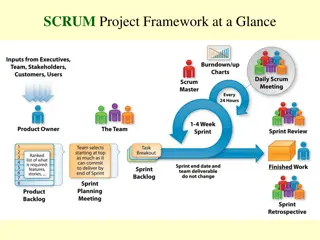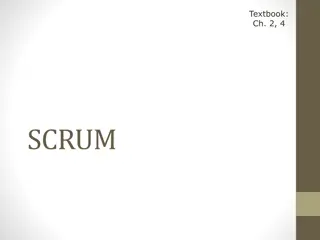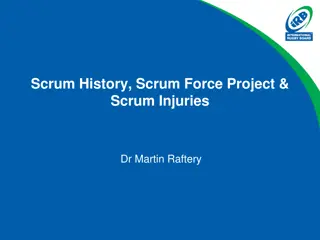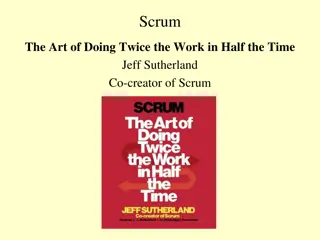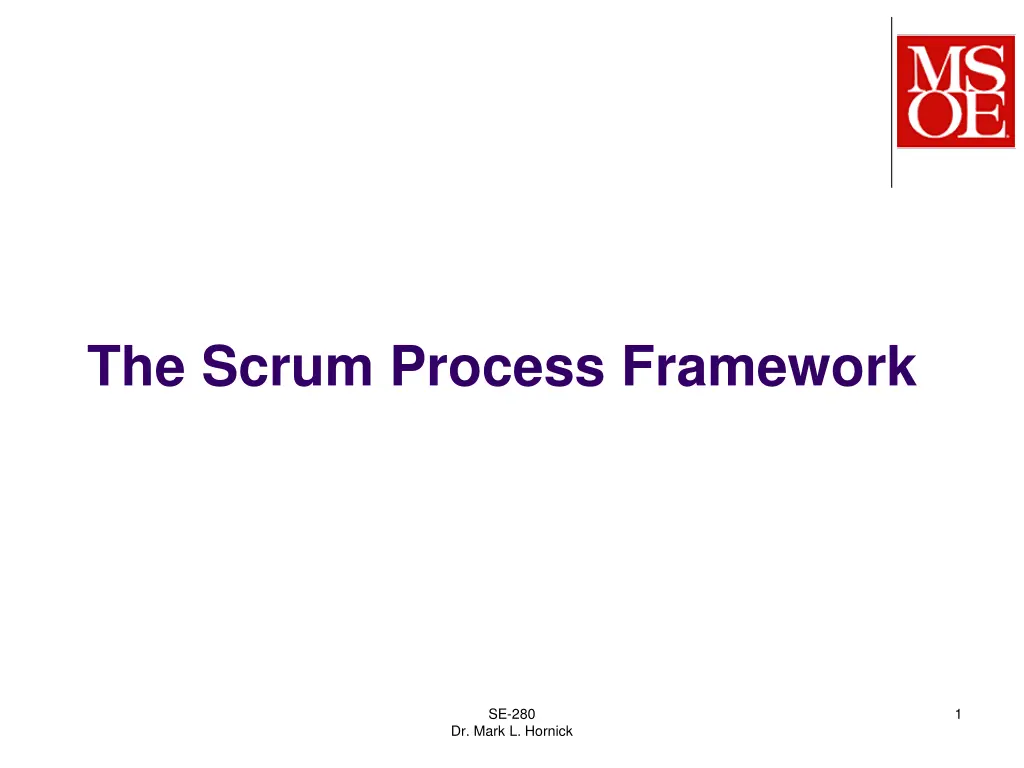
Understanding the Scrum Process Framework with Dr. Mark L. Hornick
Dive into the Scrum process framework guided by Dr. Mark L. Hornick, exploring the essence of Scrum, roles like Development Team and Product Owner, and the importance of a Scrum Master. Discover the principles, best practices, and tools involved in this agile methodology.
Download Presentation

Please find below an Image/Link to download the presentation.
The content on the website is provided AS IS for your information and personal use only. It may not be sold, licensed, or shared on other websites without obtaining consent from the author. If you encounter any issues during the download, it is possible that the publisher has removed the file from their server.
You are allowed to download the files provided on this website for personal or commercial use, subject to the condition that they are used lawfully. All files are the property of their respective owners.
The content on the website is provided AS IS for your information and personal use only. It may not be sold, licensed, or shared on other websites without obtaining consent from the author.
E N D
Presentation Transcript
The Scrum Process Framework SE-280 1 Dr. Mark L. Hornick
What is Scrum? A framework for organizing and managing work Values and Principles (guidance: Agile Manifesto) Best Practices (TBD by each organization) Design Coding Reviews RCS *Build *Test *Doc Process (assisted by tools such as Jira) Planning/Estimating (User Stories, Product Backlog etc) Executing (Roles, Responsibilities, Sprints, Daily Scrum) Measuring/Tracking/Predicting (Burndowns etc) Evaluating/Improving/Optimizing (Reviews and Retrospectives) SE-280 2 Dr. Mark L. Hornick
Product Backlog A (prioritized?) inventory of yet-to-be-worked- on Product Backlog Items (PBIs) These comprise the features of the product to be built (as well as other items to be discussed later) SE-280 3 Dr. Mark L. Hornick
Roles: The Development Team A self-organizing, cross-functional team of technical people who collectively are responsible for all of the work necessary to produce working, validated assets. SE-280 4 Dr. Mark L. Hornick
Roles: Product Owner The empowered central point of product leadership. One of the three roles on a Scrum team; the single voice of the stakeholder community to the Scrum team. The product owner defines what to do and in what order to do it. SE-280 5 Dr. Mark L. Hornick
Project Manager? aka whip-cracker or MS Project jockey Found in traditional projects Scrum has no formal concept of a project manager. The project manager is mentioned in the context of Scrum for comparative, or illustrative purposes only. SE-280 6 Dr. Mark L. Hornick
Role: Scrum Master Coach, facilitator, impediment remover, and servant leader of the Scrum team. The ScrumMaster is one of the three roles on a Scrum team. The ScrumMaster provides process leadership and helps the Scrum team and the rest of the organization develop their own high-performance, organization- specific Scrum approach SE-280 7 Dr. Mark L. Hornick
Functional Manager? aka pointy-haired boss Line manager or reporting manager. Members of development teams might report to functional managers. Expertise is generally in bean counting or spreadsheet & powerpoint engineering. SE-280 8 Dr. Mark L. Hornick
Sprints The fixed period of time during which the development team performs the tasks necessary to complete the items selected from the Product Backlog during sprint planning. Typically a timebox between one week and a calendar month during which the Scrum team is focused on incrementally producing a potentially shippable product increment that meets the Scrum team s agreed-upon definition of done Dr. Mark L. Hornick SE-280 9
Sprint Tasks The technical work that a development team performs in order to complete a PBI. Each PBI likely requires 1 or more tasks to perform. Most tasks are defined to be small, representing no more than a few hours to a day or so of work. SE-280 10 Dr. Mark L. Hornick
Summary of Scrum Practices SE-280 11 Dr. Mark L. Hornick





